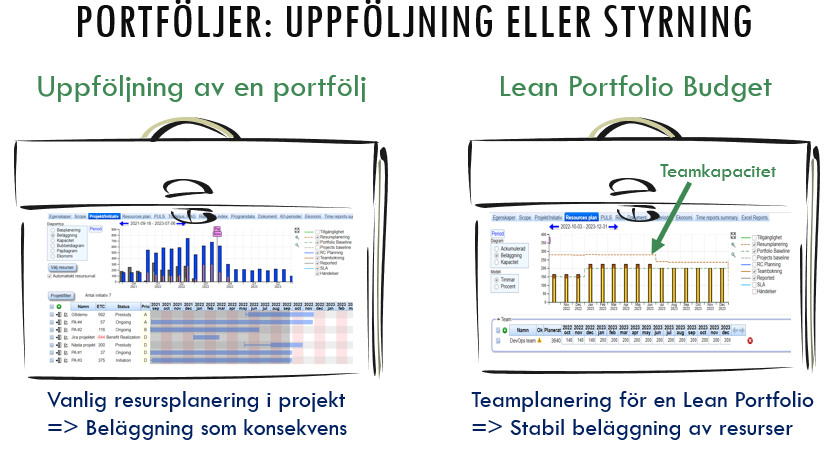
Lean Production is a philosophy on how to manage resources. The aim of Lean is to identify and eliminate all factors (muda) in a production process that do not create value for the end customer[1] In simple terms, it is about 'More value for less work' (ref. Wikipedia).
How should Lean be understood for projects in matrix organisations where the majority of the work and cost is resource hours? Central to lean production is "Just-in-Time" which means that substances¬/materials/parts/products are in the right place at the right time. The main principle of lean is to eliminate waste. Lean has its origins in manufacturing where the product passes through a number of stations. The aim of Lean is to dimension production so that bottlenecks can be avoided. It must also be added that lean production has indirectly reintroduced the assembly line in our factories as it is easier to even out the workload. However, it can be difficult to try to apply the same concept straightforwardly to resource-intensive projects. When looking only at one project at a time, this approach may be relevant but not when looking at an entire organisation working on what can be classified as service production. In the case of project-related service production, it means spending time only on activities required to gain acceptance and complete the project. Implementing Scrum is an example of working with lean. One company I visited has set up teams that are each specialised in a particular technology area. Projects place orders with each team to get the job done. These teams, working for several different projects, queue up the jobs and then work on the tasks of the different projects as if on an assembly line. The circle is closed.
The fact remains that efficiency in most organisations has great potential for development. Measurements show that it is more than 50% in service activities such as development and operations, etc. The fact that you cannot be efficient on a single project eight hours a day, all five days a week is obvious for several reasons. The fact that project members have to be assigned full-time to a project creates several problems of which inefficiency (waste) is only one. Why not do three projects instead of two in the same period of time with the same resources? This can be done by optimising the use of resources. Scrum, Kanban and DSDM/Atern show the way. Or apply Solutions for Teamwork® which is a framework for optimal resource use in distributed organisations working in project-driven organisations. Work on the individual project is done over a longer period of time, but not at a higher cost. It can be worth it. Especially as many projects do not keep to their original plans anyway, but are severely delayed in practice.
At the pen/Georg
Comments on what I write, questions and more are welcome at georg.silber@ln4solutions.com or call me directly on 0708 502 191.